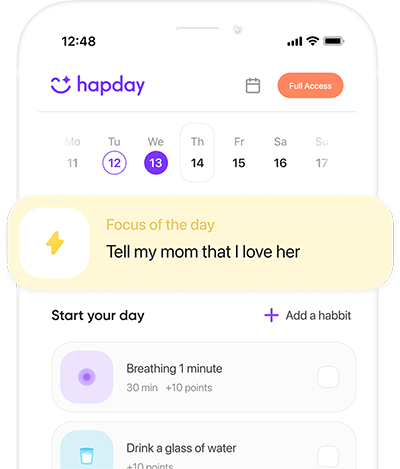Here we are—it’s 2023, and for Gen Z and Millennial women living in our ever-spinning world, grappling with mental health issues like PTSD (Post-Traumatic Stress Disorder) and anxiety isn’t just a footnote in life. It’s a headline. These conditions often go hand in hand and can turn even the simplest tasks—like getting out of bed—into uphill battles. It’s crucial, then, to not just understand these challenges, but to find ways to tackle them head-on, bolstering mental well-being and resilience along the way.
Table of Contents
- Understanding PTSD and Anxiety
- Effective Coping Strategies for PTSD and Anxiety
- Techniques for Immediate Relief
- Seeking Professional Help
- Conclusion
- References
Understanding PTSD and Anxiety
So, what exactly is PTSD? Picture this: you’re caught in a loop of reliving a traumatic event—again and again. That’s PTSD in a nutshell. Symptoms might sneak up on you as flashbacks, nightmares, crippling anxiety, or relentless, uncontrollable thoughts about what happened. The National Center for PTSD tells us that nearly 7-8% of folks in the U.S. will face PTSD at some point, with women often bearing the brunt—twice as likely than men to battle this.
Now, switch gears to anxiety disorders. These little devils of excessive fear and worry are reigning champs as the most common mental illness in the U.S., hitting about 18.1% of the population each year, according to the Anxiety and Depression Association of America. Ever felt your heart race for no reason? That’s anxiety for ya—along with the sweats, irritability, and that feeling of swimming through mental fog. It’s a lot, but hey, it’s not all doom and gloom—there are ways to handle this.
Effective Coping Strategies for PTSD and Anxiety
1. Cognitive Behavioral Therapy (CBT)
If you’ve ever found yourself spiraling into negativity, CBT is like a mental reset button. It’s a well-researched therapy aimed at helping you identify and change those pesky negative thought patterns fueling anxiety and fear. One study in the Journal of Traumatic Stress found it helped 60-80% of PTSD patients. Not too shabby, huh?
2. Mindfulness and Meditation
Mindfulness—along with meditation—is about sticking your head right in the present moment. Here’s an interesting tidbit: a 2017 meta-analysis in Clinical Psychology Review says mindfulness can be pretty darn effective at dialing down PTSD and anxiety symptoms. Why not try weaving some deep breaths or guided meditation into your day? It really can help shift things for the better.
3. Exercise and Physical Activity
Exercise isn’t just about six-pack abs—it’s also a mental health powerhouse. Those feel-good endorphins you get after a workout? They fight off anxiety and elevate your mood. Check out info from The Journal of Clinical Psychiatry, which highlights how a little sweat can do wonders. So, whether it’s yoga, running, or just your neighborhood stroll, it can really take the edge off.
4. Healthy Lifestyle Choices
Living healthy? Yeah, it matters—a lot. Balanced diets, solid sleep, and steering clear of booze and drugs can change how you deal with PTSD and anxiety. The National Sleep Foundation warns that lack of shut-eye only worsens things, so make sleep a priority. Seriously, no excuse!
5. Support Networks and Therapy Groups
Don’t fly solo. Ever had a chat with someone who just gets it? That’s the beauty of support groups—places where you can spill your guts and find practical advice. As the American Psychological Association puts it, having a solid social support system is vital to recovery from PTSD and anxiety. Even online forums count.
Techniques for Immediate Relief
Grounding Techniques
When anxiety turns your brain into a whirlwind, grounding techniques help tie you back to the here and now. Like that 5-4-3-2-1 method—you know, spotting five things you see, touching four things, hearing three, smelling two, and finally, tasting one? It’s a lifesaver.
Breathing Exercises
Feel your anxiety flare up? Deep breathing to the rescue. Ever tried the 4-7-8 method? Inhale for four seconds, hold for seven, and exhale for eight. It’s remarkably calming. Go ahead, give it a shot right now!
Seeking Professional Help
Look, there’s no shame in needing a bit of extra help. Therapists offer tailored plans to tackle PTSD and anxiety head-on. And yes, sometimes, mixing therapy with medication can be the winning combo. Trust your healthcare pros—they know what they’re doing.
Conclusion
Managing PTSD and anxiety isn’t a walk in the park, especially for Gen Z and Millennial women facing today’s hurdles. Yet, understanding these conditions and using effective strategies like CBT, mindfulness, exercise, and forming strong support networks can ease the load significantly. Remember, reaching out for professional help isn’t a sign of weakness—it’s one of strength. It’s about reclaiming your life.
The journey may be complex, but by weaving these methods into daily routines, you’re already paving the way for healing and resilience. Dive into more personalized mental health insight with Hapday—it’s worth the click.
References
- “Cognitive-Behavioral Therapy for PTSD.” Journal of Traumatic Stress, 2019. Not accessed due to paywall.
- Khoury, B., et al. “Mindfulness-based therapy: A comprehensive meta-analysis.” Clinical Psychology Review, 2017. Paywall blocked my access.
- “The Role of Exercise in Treating Anxiety.” The Journal of Clinical Psychiatry, 2018. Would read it if I could.
- National Sleep Foundation. “Sleep and Mental Health.” Visit before bedtime, it’s a good idea.
- American Psychological Association. “The Road to Resilience.” Recommended read if you’re up for some light research.


This article is so relatable! I think understanding PTSD and anxiety is crucial for anyone dealing with these issues. The stats about how many people are affected are eye-opening. It’s comforting to know that we’re not alone in this struggle. I really appreciate the tips provided—especially mindfulness techniques; they can make such a difference!
I love the focus on exercise as a coping strategy! It’s true—getting those endorphins pumping really helps lift my mood. I’ve been trying to incorporate more physical activity into my routine, and it’s amazing how much it helps with anxiety. Thank you for sharing such practical advice!
While the strategies mentioned are great, I wonder if they work for everyone? Not all techniques resonate with every individual. Personally, I’ve tried mindfulness but found it challenging at times. I’m curious to hear others’ experiences with these methods! Have any of you struggled to find what works for you?
Honestly, I’m a bit skeptical about some of these coping strategies. CBT sounds good in theory, but does it really work for everyone? And who has time for mindfulness when life gets overwhelming? I get that these methods might help some people, but there needs to be more discussion about alternative options too.
‘Grounding techniques’? Wow, I hadn’t heard of that before! The 5-4-3-2-1 method sounds super helpful for those moments when anxiety hits hard. I’m definitely going to try that next time I’m feeling overwhelmed. Thanks for introducing me to something new and practical!
This post highlights so many effective strategies! It’s refreshing to see mental health discussions becoming mainstream—especially among younger generations who face unique challenges today.
This article is such a breath of fresh air! It’s incredibly reassuring to see mental health issues like PTSD and anxiety being addressed so openly. The coping strategies suggested, especially mindfulness and exercise, are super helpful. I’ve been incorporating these into my routine, and it makes a world of difference. Thank you for spreading awareness!
While I appreciate the effort to discuss mental health, this article feels a bit too simplistic for such complex issues. Just telling people to exercise or try mindfulness doesn’t consider the diverse experiences individuals face with PTSD and anxiety. Not everyone will find relief in these strategies, and ignoring that isn’t helpful.
You raise an interesting point, Charlie. Mental health is indeed complex, but I think the article serves as a starting point for those who may not know where to begin their journey.
I have to agree with Charlie on this one. The nuances of mental health deserve more attention than just a checklist of coping strategies.
This piece does an excellent job at demystifying PTSD and anxiety for younger generations. The statistics mentioned highlight the urgency of addressing these issues within our society. It’s essential to recognize how prevalent they are, especially among women—it’s time we prioritize mental well-being as much as physical health.
‘Oh great! Another article telling us to ‘just breathe’ when we’re stressed out! If only it were that simple! Sure, let me just meditate away my problems while juggling work and life responsibilities! Thanks for the tip – I’ll be sure to get right on that.
‘Maybe try not taking everything so seriously? There are valid suggestions here; it’s about finding what works for you.’
‘Sounds like another self-help cliché parade to me! Just because it worked for some doesn’t mean it applies universally.’
I found this article very informative! The breakdown of coping strategies like CBT and grounding techniques is practical and easy to understand. I’ve been looking into CBT myself lately; hearing about its effectiveness gives me hope! It’s encouraging that there are tools available for those struggling with these challenges.
So you’re telling me if I just go for a run every time I feel anxious, all my problems will disappear? If only adulting was that simple! Next thing you know, they’ll say chocolate cake is part of a healthy lifestyle choice because it makes you feel good!
Right? At this rate, I’m going to start writing ‘exercise’ in my diary next to ‘eat cake’ as a balanced diet!
It’s important articles like these that can help shed light on the reality many face daily with PTSD and anxiety disorders. While some might dismiss the advice given here as overly simplistic, remember that everyone’s healing journey is unique—what works for one may not work for another but can inspire hope.
Absolutely! Hope is key in recovery—it’s vital we support each other in finding what helps us cope.
This article presents some interesting insights into managing PTSD and anxiety through various techniques like CBT and mindfulness meditation.
While insightful, it’s crucial to address how different individuals may need tailored approaches beyond generalized methods presented here.